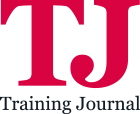Sue Stockdale explores why thinking time is so critical for effective leadership. When leaders slow down, clarity returns, influence grows, and energy builds. This insightful piece shares practical ways to reclaim space for reflection, helping leaders shift from reactive to intentional, and inspiring others through purpose-driven presence, not constant motion.
If there’s one symptom I see time and time again in my coaching work with leaders, it’s this: thinking time is in critically short supply. The people I work with are smart, capable, and ambitious, but they’re also running at full tilt, juggling competing demands, reacting to the urgent rather than the important.
These challenges might seem like separate problems on the surface…
Under that constant pressure, some common issues start to show up: they have trouble managing time and distractions, difficulty influencing others, find a lack of clarity on purpose and direction, which can lead to disengaged stakeholders, and a struggle to inspire their teams. These challenges might seem like separate problems on the surface, but I believe they’re deeply connected. At the heart of them is a single truth, when you don’t have time to think, you can’t lead with intention.
Managing time and minimising distractions
Time management isn’t just about calendars and to-do lists. It’s about energy, focus, and boundaries. I often ask leaders: “What are you saying yes to that’s costing you the ability to think clearly?” Because without reflection, we are just reacting.
Most distractions don’t come from outside, they’re self-generated. We switch tasks constantly, keep ourselves busy to feel productive, and let notifications fracture our attention. But the real productivity lies in slowing down long enough to ask: “What matters most right now that will take the business or our mission forwards?” The best leaders aren’t the busiest. They’re the most intentional with their attention.
Being more influential
Influence isn’t about dominating a conversation or persuading someone to agree with you. It’s about clarity and conviction. If you’re uncertain about what you stand for, others will be too. Influence starts with being grounded in your own values and direction.
When leaders take time to clarify their purpose, they start showing up differently. Their language becomes more compelling. Their decisions align with a bigger picture. People listen, not because they’re loud, but because they’re aligned. Influence, in that sense, is an outcome of internal clarity.
Clarity on purpose and career journey
It’s astonishing how many senior leaders feel unclear about what they really want. They’ve climbed the corporate ladder, gained the status, the salary and the responsibility, but when the excitement dies down, they’re left asking, “Is this it?”
That dissonance doesn’t come from lack of ambition. It comes from not pausing long enough to reflect on what’s next. Career strategy isn’t just about what roles you want; it’s about how you want to feel, who you want to become, how you want to make a bigger difference in the world and what legacy you want to leave. Purpose isn’t found in the rush; it emerges in the stillness.
One exercise I often use is deceptively simple: “What is the world calling you to step up to? What signals are you not paying attention to?” When you stop and think to get that clarity, decisions become easier, and motivation becomes more sustainable.
Engaging stakeholders
Stakeholder engagement is often framed as a communication or relationship issue. But underneath that, it’s about relevance and alignment. If your stakeholders don’t understand your intent, they can’t connect to your message.
Many leaders forget to ask themselves: “What do my stakeholders need from me, not just operationally, but emotionally and strategically?” Engagement comes when you meet people where they are, but also take them somewhere new. That requires emotional intelligence, as well as a clear anchor in your own intent and willingness to start with the other persons agenda and listen.
Being an inspiring leader
Inspiration isn’t just about giving TED-style speeches. It’s about authenticity, vision, and energy. Leaders who inspire are those who know why they’re doing what they’re doing and make that purpose visible to others. They radiate intention.
But when a leader is overwhelmed, distracted, or unclear, their energy becomes diluted. People can feel it. Teams sense when someone is just getting through the day versus leading with meaning. If you want to inspire others, start by giving yourself space to reconnect with your own why.
What’s the solution?
Make space to think.
I know that can sound overly simplistic in today’s busy world, but it’s the most strategic move a leader can make. Thinking time is not a luxury. It’s leadership best practice.
Here’s what that might look like:
- Schedule “white space” in your week: blocks of time with no meetings, no tasks -just space to reflect, recalibrate, or simply breathe. And alert those you work with, so they are not expecting you to respond to them during that time.
- Journal with prompts like: “What’s my intention this week?” or “Am I reacting, or being intentional?”
- Practice weekly intention-setting, not just goal setting. Ask: “What kind of leader do I want to be this week?” and “How do I want others to experience me?”
- Use coaching moments to slow down, not speed up. The value of coaching your team isn’t in solving problems, it’s in asking better questions to help others take time to think. Be the type of leader that role models’ good practice in doing this.
When leaders reclaim time to think, everything shifts. Influence deepens. Priorities sharpen. Energy returns. And most importantly, they lead with the kind of intention that others want to follow. Because the truth is, your leadership lives in your presence. And presence starts with space.
Sue Stockdale is a polar adventurer, executive coach and leadership expert and has a series of TJ blogs you can read




